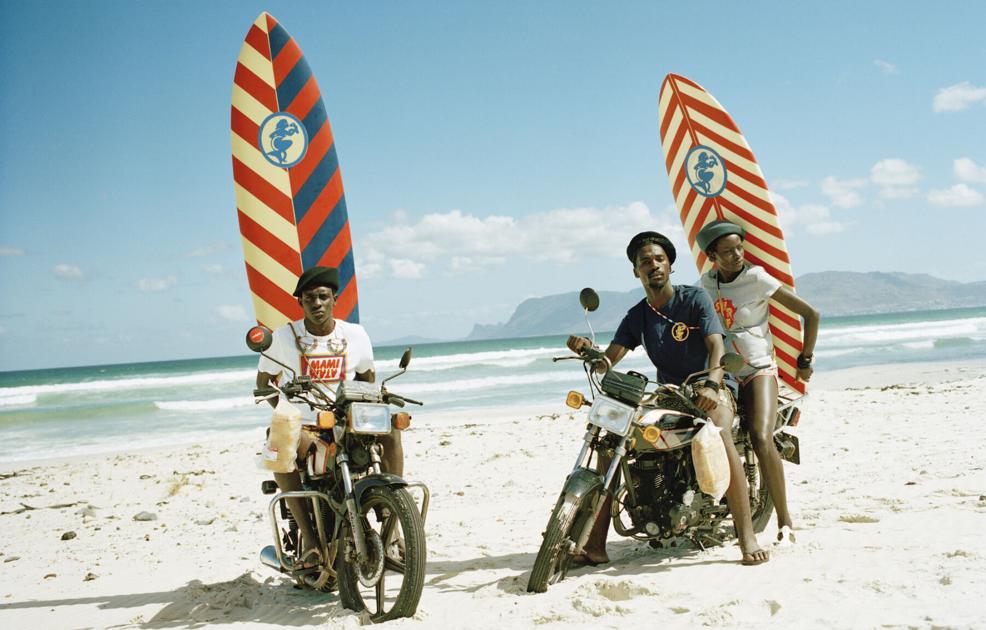Surfing has always fascinated me, from a young age. Perhaps a strange interest in the fact that I was born and raised in Fort Worth, hardly a mecca for hanging ten. Aside from a few pretty pathetic – if still great fun – attempts as a kid during the California summer vacation with the family, my at best weak connection to surfing culture is a lot of love for the Beach Boys, more watching “Gidget” and the cheesy Frankie and Annette-Strand movies, as I should admit, and of course Bruce Brown’s 1966 surf classic “The Endless Summer”.
I enjoyed reading Jack London’s 1913 novel “John Barleycorn” for many reasons, but one is the introduction that describes London, filled with cash from the 1907 Call of the Wild license fees Sailed Hawaii where he encountered surfing for the first time and the thrill of the “swiftness of the sea”. Always the adventurer, London jumped straight to the surfers and challenged the waves and wrote an essay titled “A Royal Sport” which is widely credited with the fact that surfing has drawn the attention of mainland Americans. A newer year is William Finnegan’s “Barbarian Days: A Surfing Life”, a Pulitzer Prize-winning ode to the joys of surfing.
My attraction to the sport, albeit as a spectator, is based in my opinion on the pristine nature of the ocean, coupled with the promise of limitless possibilities and freedom of each wave. Surfing delivers a perfectly balanced, intoxicating blend of gravity and death defying danger and balletical grace, a sporty equivalent of Jimi Hendrix playing guitar. It is arguably the ultimate man-versus-nature sport, too. On the other hand, I might just like it because it’s so cool.
On the heels of the surfing debut at the upcoming Olympic Games comes “Afro Surf”, a lush, 300-page tome that records the previously largely ignored African surfing culture.
The photos alone justify the $ 40 price tag. The pictures amaze and let the reader immerse themselves directly in the action.
The book seeks to not only celebrate African surfing and its associated cultures, but also to dispel several myths and misunderstandings.
First and foremost is the claim that the Polynesians developed surfing, and the first written reports of the sport date back to 1778 in Hawaii. The first known surfing report, Afro Surf Counter, actually dates back to 1640 in what is now Ghana. However, according to the book, the practice dates back more than 1,000 years in Africa.
Surfing in Africa is also fairly emerging in its antiquity, at least in terms of rediscovery and penetration across the continent, not to mention spreading across the continent. So Africa is about to lead the next surf explosion.
Contributors also question the idea of much of the rest of the world that Africa is more of a monolithic continent than a combination of unique and individual countries, no different from Europe or America in this regard. The same goes for sport.
“The African surf culture is as diverse as the continent it lives on,” writes author Roger Vuanza.
The authorship of the book is attributed to Selema Masekala and Mami Wata, a Cape Town surf company dedicated to spreading the African surfing culture. Much of the book’s content, however, comes from individual surfers and photographers across Africa.
“The journey that all surfers take is a beautiful metaphor for life,” writes author Kunyalala Ndlovu, adding: “Am I having fun? Every damn time. “
Contributor Morabeza writes about new opportunities and African coastlines that are yet to be experienced.
“Africa is the last frontier,” writes Morabeza. “We’re just scratching the surface”
Afro Surf explores the hilarity, dangers and spiritual aspects of surfing, as well as racism, the barriers faced by African women playing the sport and more. Brushes with sharks, hippos and possibly mermaids figure in them.
The stories here are as individual as the contributors and vice versa. One telling common ground, however, is that everyone is more interested in passing the surfing legacy on to younger generations than fighting for their own fame.
A Kickstarter campaign funded the book’s publication with profits earmarked for two African surf therapy organizations, Waves for Change and Surfers Not Street Children.
Throughout the book, contributors share the joys of catching a wave that we non-surfers can only watch and dream of.
“And when it’s good, only a surfer knows the feeling,” writes author Nick Njapha. “Pure Stoke, hey. Pure joy. Non-stop smile from ear to ear. “
Matt Smith can be reached at [email protected].

